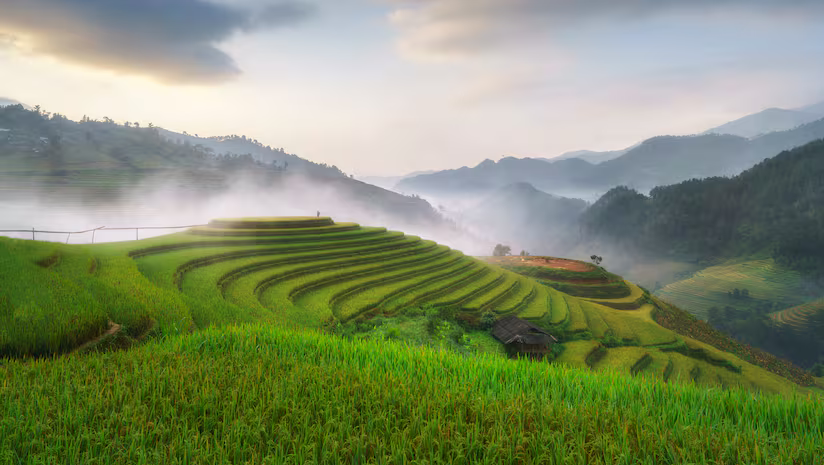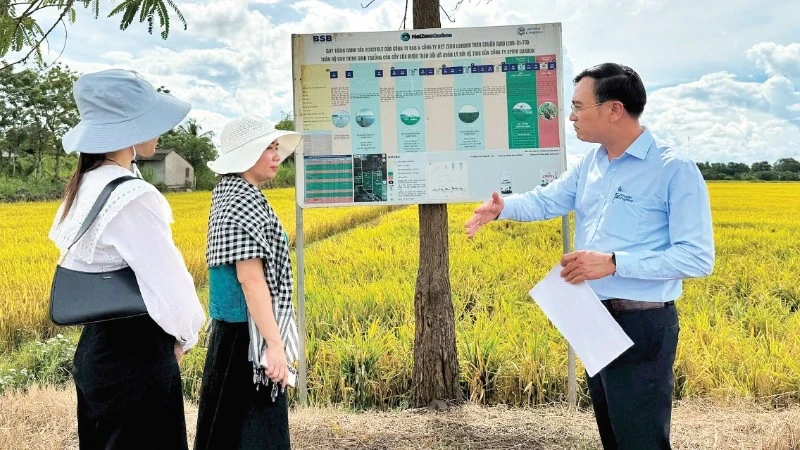Tags
Sow much better: Vietnam’s low-emission rice project yields huge gains
By Amanda Lim

Vietnam’s key low-emission rice project is delivering higher yields and profits while cutting costs and carbon, earning further support from government.
The pilot programme of Vietnam’s 1 Million Hectares of High-Quality, Low-Emission Rice project was reported by the Ministry of Agriculture and Environment on July 13.
For the Summer-Autumn 2025 crop, the ministry implemented 11 pilot models across different ecological zones to assess sustainable farming practices and measure emission reductions.
Additionally, 101 pilot models were also launched in the Mekong Delta provinces, covering over 4,518 hectares.
Results from the models showed yield increases of 5 to 10% and profit gains of VND3m to VND5m (US$114 to 190) per hectare.
Promising results
The pilot model in the Đồng Tháp Province recorded rice yield increase of 4% to 7.1 tonnes per hectare.
The model reduced emissions by around 3.13 tonnes of CO2 per hectare for each crop cycle.
According to the ministry, farmers earned nearly VND28m (US$1,064) per hectare, an increase of around VND4.6m to VND4.8m per hectare.
Production costs also decreased by about VND500 (US$0.02) per kilogram of rice.
Furthermore, farmers earned additional VND400,000 per hectare by selling straw.
In Cần Thơ reported promising results as of June 2025, with rice yields 0.3 to 0.7 tonnes higher per hectare.
Farmers earned VND1.3m to VND6.5m (US49.40toUS247.00) more per hectare than those using traditional methods. The ministry report said this was an increase equivalent to 6.6% to 36.7%.
Overall, production costs fell by an average of VND1.1m (US$41.80) per hectare.
The pilot also recorded input reductions, including a 50% cut in seed use, 30% less nitrogen fertiliser, two to three fewer pesticide applications, and a 30-40% drop in irrigation water use.
In terms of emissions, the pilot reduced 2 to 12 tonnes of CO2 per hectare.
Challenges to overcome
While the results of the pilot were promising, the pilot also flagged several issues, including infrastructure.
This has caused irrigation problems for farmers.
“Currently, the models are facing difficulties in water drainage. Some localities can only implement part of the farming process. According to the process, water must be drained three times, but the current irrigation systems, surrounding canals, and main canals are not sufficient to carry this out,” said Deputy Minister Trần Thanh Nam.
To mitigate this, the ministry is working with the World Bank on a US$340m project to invest in improving irrigation.
While the World Bank has committed US$50bn in non-refundable aid to implement the project, the ministry has yet to receive this capital because of “policy issues”.
Trần said that he has made Vietnam’s prime minister, Phạm Minh Chính, aware of the issue and implored him to communicate with the Ministry of Finance to resolve the issue.
“If not done soon, when the investment term ends, the World Bank will transfer this 50 million USD to another country,” said the deputy minister.
According to the ministry, Prime Minister Phạm has ordered the completion of zoning by the third quarter of this year.
Additionally, he has called for the relevant ministries to work on building a national rice brand.
https://www.agtechnavigator.com/Article/2025/07/23/vietnams-low-emission-rice-project-cuts-costs-and-carbon-lifts-yields-and-profits/Published Date: July 23, 2025






